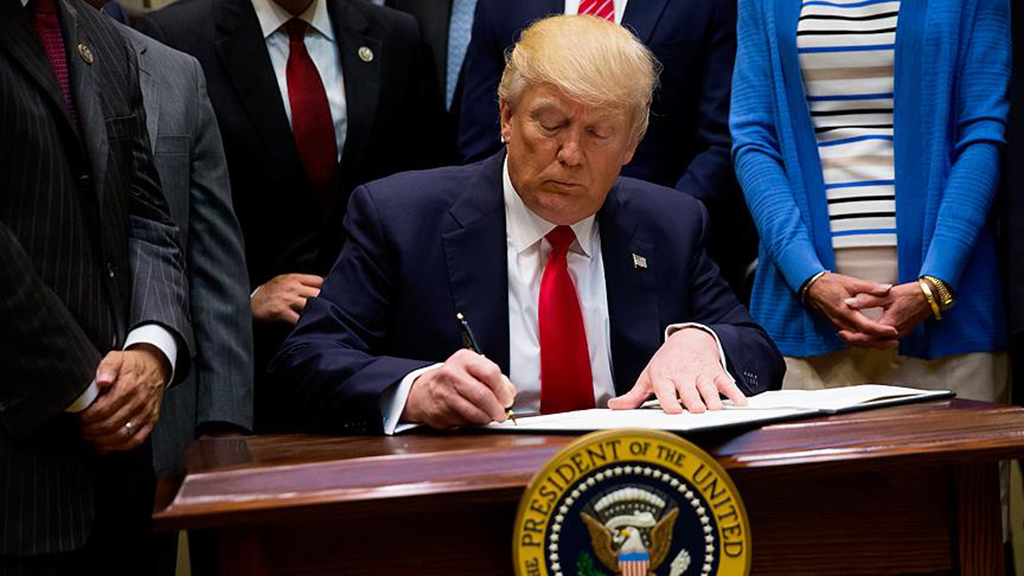Finally moving from the realm of political rhetoric to concrete policy action on combative foreign trade, the Trump administration formally paved the way for potential global trade wars by imposing a 25 percent tariff on steel and a 10 percent tariff on aluminum imports. The way in which the U.S. plunged into blatant mercantilism reflected the chaotic type of public management through which the Trump presidency so far preferred to advance its goals in other areas with poor preparatory work, internal coordination or public diplomacy. This critical decision, which inevitably escalated tensions with China, Canada, Mexico, Brazil and the EU, was fiercely debated within the White House when Chief Economic Adviser Gary Cohn and Defense Secretary Jim Mattis expressed serious concerns.
Cohn, who had to resign from his post during the process, raised more liberal concerns related with the growth prospects of the American economy, along with the potential impact of prospective retaliatory actions. Mattis, on the other hand, was more concerned about the impact of these tariffs on U.S. military requirements and negative impacts on key allies, henceforth recommending targeted tariffs. But at the end, it was the hawkish figures on strategic trade policy such as Commerce Secretary Wilbur Ross and Chief Trade Adviser Peter Navarro who had the upper hand alongside President Donald Trump who was really pleased to realize one of his main electoral pledges.It was no secret that the U.S. gave up its promises on preserving the liberal international trading order long before, but the imposition of these tariffs carries the debate on strategic trade policy to the level of national security.
In fact, the legal precept used for the tariffs to go around World Trade Organization (WTO) rules was produced with reference to an alleged national security threat posed by the foreign production of U.S. steel and aluminum needs. However, it does not require tremendous expertise to predict that the blatant use of this concept will trigger different forms of retaliation by the affected countries through imposition of trade penalties on the basis of perceived “national security threats.”
In an attempt to soften Chinese reactions by expressing that the move is designed to achieve fair and reciprocal trade, rather than kick starting global trade wars, top figures from the U.S. economy and commerce bureaucracy met with Chinese President Xi Jinping’s top Economic Adviser Liu He. But the tariffs will hit Canada the hardest as it provides 16 percent of total U.S. demand in steel, followed by Brazil and South Korea, while China provides a modest 2 percent despite all the tough protectionist rhetoric directed against Beijing. That’s why the strongest official reactions to the imposition of tariffs came from the relevant Canadian and Brazilian Ministers. The new tariffs are bound to increase complications in Washington’s relations with Toronto and Mexico City as months of tense talks to revise the North American Free Trade Agreement (NAFTA) have dismally failed to produce any tangible outcomes.
Historical patterns display a tendency on the part of the U.S. to use trade negotiations to promote American commercial interests in international markets by opposing unfair discrimination. But this tendency was based on a more offensive strategy which promoted liberalization of international trade while observing U.S. economic gains. But the Trump administration has turned into a more defensive and orthodox form of protectionism whereby specific countries and sectors are openly blamed as the sources of U.S. trade deficit. International trade is not like a ledger register, where imports indicate the costs and exports indicate the benefit, therefore, trade surpluses and deficits do not necessarily mean that one country is “winning,” while the other is “losing.” Trade deficits are influenced by a multiplicity of factors including macroeconomic dynamics, efficiency-productivity figures and international competitiveness levels.
If trade deficit is seen as a major national problem in the U.S., the rational solution might be to increase national savings levels like typical surplus countries China, Germany and Japan, increasing research and development (R&D) investments, and constraining Federal Budget deficits. Normally, trade policies and negotiations of major global powers shall focus on trade rules and institutions, rather than specific bilateral outcomes. Concentrating on specific outcomes with a mercantilist mentality will only lead to politically managed trade, which runs exactly opposite to the goal of founding a free and fair international trading system. That is why Trump’s aggressive tariffs which might open Pandora’s box for global trade wars are bound to harm both the world economy and American interests in the long term.
[Daily Sabah, 9 March 2018]


